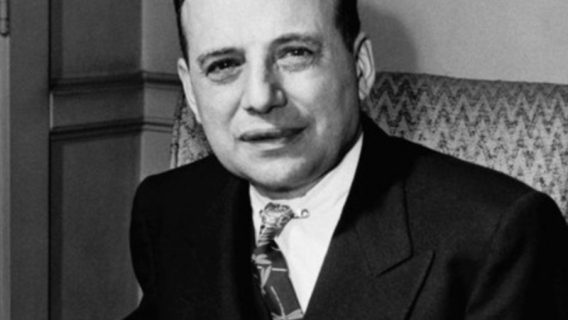Benjamin Graham was born in London in 1894. His original name was Grossbaum, but he changed it as a young man, to better fit into the Wall Street environment.
His parents moved to New York City when he was one year old. Graham was a brilliant student and won a scholarship to Columbia University. In 1914, he graduated second in his class, at age 20, and was invited to teach at the school. But he refused. His father had died, the family was poor, and Graham needed a larger income to support the family.
So he went to Wall Street and worked for the firm of Newburger, Henderson and Loeb for $12 per week.
His early duties included being a runner, delivering securities and checks, writing descriptions of bond issues, and later writing the daily market letter of the firm. Before long, he began to analyze companies, and at the age of 26 he was promoted to full partner.




In 1923, he left to set up his own partnership, and in 1928 he began teaching investment classes at Columbia.
Over time, working with former student David Dodd, the lessons of his classes were gathered into his first book, titled Security Analysis, which was published in 1934.
The book has sold over a million copies. Warren Buffett says he’s read it at least four times. He was a student of Graham’s in the 1950s when he enrolled in graduate school at Columbia, and he learned well. In fact, Buffett has often said that after his father, Benjamin Graham was the most important influence in his life. He even wrote the forward on the sixth edition. Buffet may have read the book four times, but I’ve only read mine once (it’s the second edition, published in 1940, with 851 pages), but it remains a valuable reference. You can buy it for around $45 on Amazon.
Or, you could simply read Graham’s second book, the more user-friendly The Intelligent Investor, which was published in 1949 and is less than half the size of its predecessor.
I recommend them both.
Benjamin Graham passed away in 1976 at the age of 82.
The Benjamin Graham System
So what is it that made Graham’s work so special?
In short, he systematized the entire process of evaluating companies, all with the goal of finding low-risk (or no-risk) investments that would reward investors over the long run.
Graham liked to analyze - and quantify - a business according to six factors.
- Profitability
- Stability
- Growth in earnings
- Financial position
- Dividends
- Price history
More precisely, he required that a potential investment have the following:
- An earnings-to-price yield at least twice the AAA bond yield.
- A P/E ratio less than 40% of the highest P/E ratio the stock had over the previous five years.
- A dividend yield of at least two-thirds the AAA bond yield.
- A stock price below two-thirds of tangible book value per share.
- A stock price below two-thirds of “net current asset value.”
- Total debt less than book value.
- Current ratio greater than two.
- Total debt less than twice “net current assets.”
- Annual earnings growth in the prior 10 years of at least 7% annual compounded.
- No more than two declines of 5% or more in year-end earnings in the prior 10 years are permissible.
And this was all in the days before calculators! Granted, Graham was a whiz with a slide rule, and no doubt he did a lot of the calculations in his head. Nevertheless, that’s a lot of work.
We used to have an advisory here at Cabot that closely adhered to Benjamin Graham’s investing principles, run by the incomparable (and now happily retired) Roy Ward, titled, Cabot Benjamin Graham Value Investor. Now, we have a different value investing advisory run by Chris Preston and titled, Cabot Value Investor. Chris’s advisory includes some of Benjamin Graham’s principles, but with a twist, focusing on both growth and value.
If that sounds like something you’d be interested in, click here.




*This post is periodically updated.
